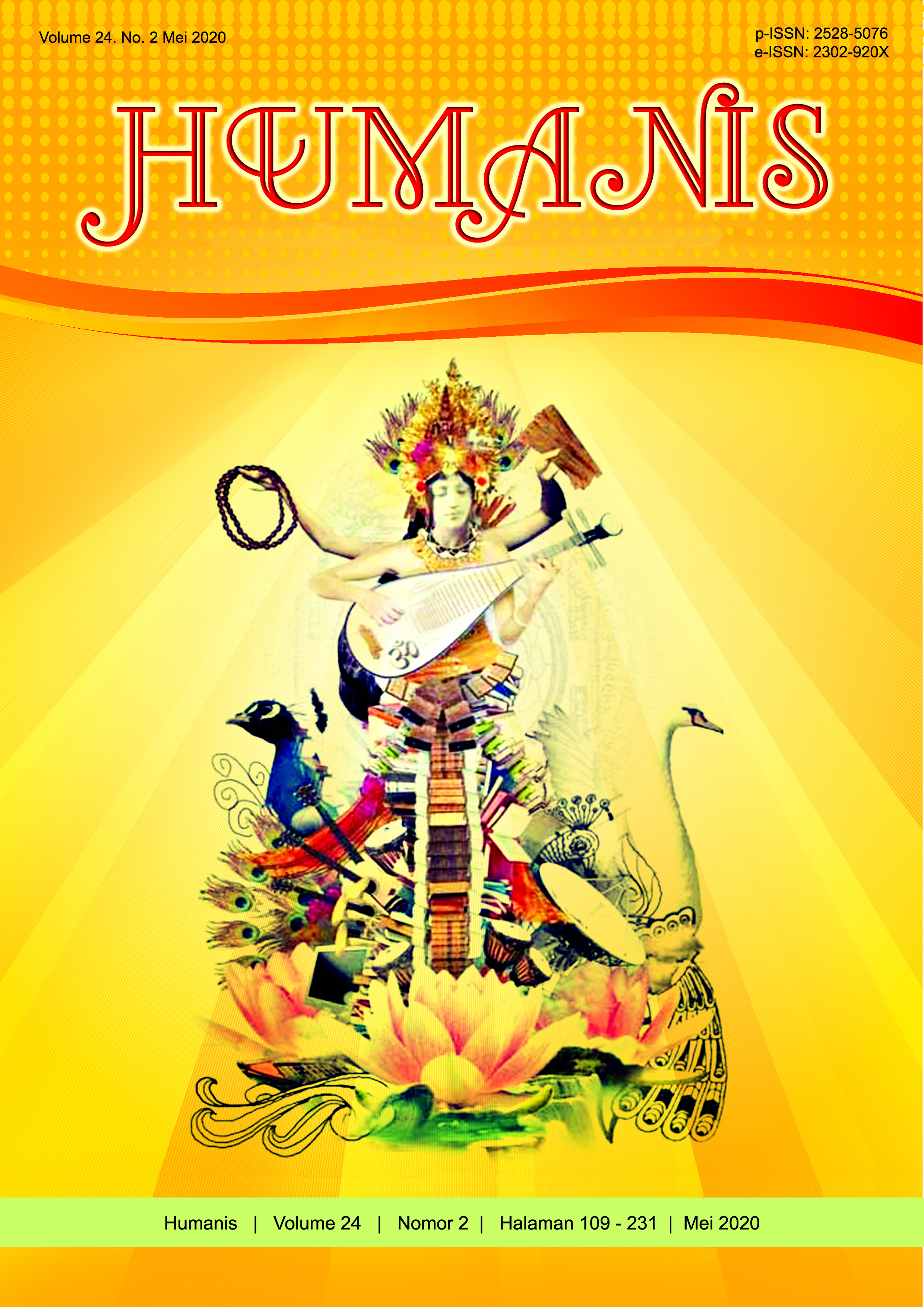Shinju Dalam Cerpen Sonezaki Shinju dan Cerpen Shinju Ten No Amijima Karya Chikamatsu Monzaemon
Abstract
The title of this research is “Shinju in Sonezaki Shinju and Shinju Ten no Amijima, Short Stories by Chikamatsu Monzaemon”. This research aims to examine the background factors of shinju and the author's view of shinju in the Sonezaki Shinju short story and Chikamatsu Monzaemon's Shinju Ten no Amijima short story. The method used in this research is a descriptive analysis method by Ratna (2015). The theory used in this research are the sociological theory of literature proposed by Wellek & Werren (1990), the author's worldview theory proposed by Goldmann in Faruk (2010) and suicide theory proposed by Emile Durkheim (1897). Based on the results of the analysis found three factors underlying the occurrence of the shinju phenomenon in the Sonezaki Shinju short story, such as 1) shinju as a form of rejection of custom marriage, 2) shinju as a way out of conflict between on, giri, and ninjo, and 3) shinju is a form of proof of love, while in Chikamatsu Monzaemon's Shinju Ten no Amijima short story there are three factors underlying the shinju phenomenon, such as 1) shinju as a form of implementation of giri, 2) shinju as a form of shame, and 3) shinju as a form of proof of love. From these factors there are also three authors' views about shinju itself, such as 1)shinju restores self-esteem, 2) shinju to remove shame, and 3) shinju as a union of love.
Downloads
References
Ardhanariswari, 2009.Latar Belakang Shinju Tokoh Kuki dan Rinko dalam Novel Shitsurakuen (skripsi). Depok: Universitas Indonesia.
Ariefa, Nina Alia. 2013. Tema dan Nilai Kehidupan dalam Lakon Sugawara Denju Tenarai Kagami. Dalam Jurnal Al-Azhar Indonesia Seri Humaniora, Volume 2, Nomor 1, hlm. 21-32. Jakarta: Universitas Al-Azhar Indonesia.
Benedict, Ruth. 1989. Pedang Samurai dan Bunga Seruni (The Chrysantheum and The Sword), Alih Bahasa, Pramudji. Jakarta: Sinar Harapan.
Durkheim, Emile. 1897. Suicide:A Study of Sociology. London: Routledge Classics.
Eisenstadt, S.N. 1996. Japanese Civilization : A Comparative View. Chicago, IL : University of Chicago.
Faruk. 2010. Pengantar Sosiologi Sastra. Yogyakarta: Pustaka Pelajar.
Lebra, Takie Sugiyama. 1976, Japanese Patterms of Behavior. Hawaii: The University Press of Hawaii.
Monzaemon, Chikamatsu dan Haruo, Suwa.2007. Sonezaki Shinju Shinju Ten no Amijima Gendai Goyakutsuki.Tokyo: Kadokawa.
Mulyadi, Budi. 2018. Fenomena Penurunan Angka Pernikahan dan Perkembangan Budaya Omiai di Jepang.Dalam Kiryoku. Volume 2, Nomor 2, hlm. 65-71. Semarang: Universitas Diponegoro.
Rahman, Aditia. 2012. Korelasi Konsep Haji dalam Peristiwa Pengunduran Diri Pejabat Pemerintah Jepang.Dalam Japanology, Volume 1, Nomor 1, hlm. 116-126. Surabaya: Universitas Airlangga.
Rahmah, Yuliani. 2018. Nilai-Nilai Bushido dalam Minwa. Dalam Kiryoku.Volume 2, Nomor 1, hlm. 1-10. Semarang: Universitas Diponegoro.
Ratna, Nyoman Kutha. 2015. Teori, Metode, dan Teknik Penelitian Sastra. Yogyakarta: Pustaka Pelajar.
Sakurai, Tokutaro. 1976. Nihon Minzokugaku Koza. Japan : Charles E Tuttle
Wellek, Renne dan Austin Warren. 1990. Teori Kesusastraan (Diterjemahkan Oleh Melani Budianta). Jakarta: Pustaka Jaya.


















